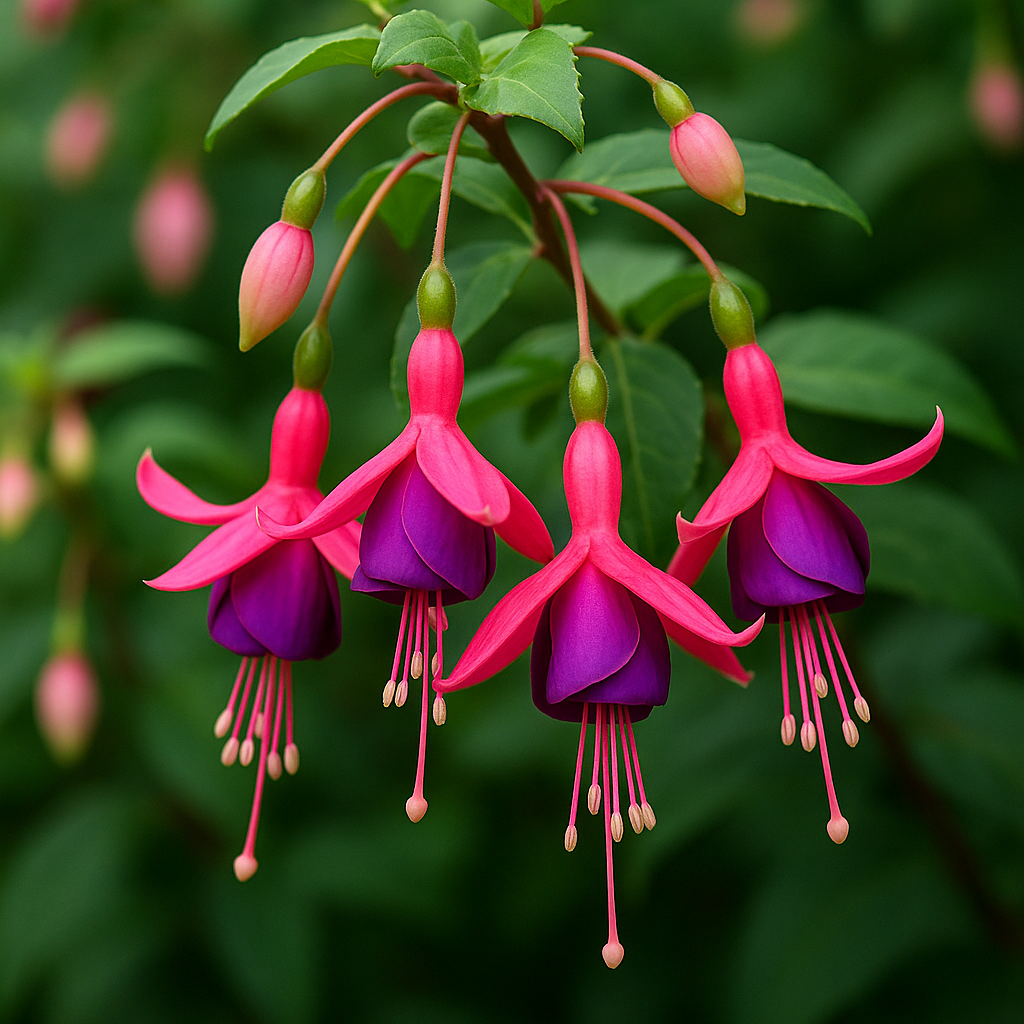Fuchsia Plant, also known as Lady’s Ear Drops, is one of the most charming ornamental species you can grow in gardens, balconies, or hanging pots. Its delicate, pendulous flowers—often in shades of pink, purple, red, and white—resemble elegant earrings, inspiring its common name. Beyond its beauty, the Fuchsia Plant is loved for its adaptability and extended blooming period.
Origin and Main Characteristics
Native to temperate and humid regions of South America, Fuchsia hybrida has become widely cultivated around the world thanks to its ability to enhance small spaces with its vibrant presence. The plant typically grows between 12 inches and 4 feet tall, depending on the variety, and its blooms appear from spring through early autumn.
Fuchsia’s standout feature is its drooping, bell-shaped flowers with long sepals and curved petals that create a visually stunning contrast. Many varieties also attract hummingbirds, making it a great choice for biodiversity in your garden.
How to Grow Fuchsia Successfully
Fuchsia is relatively easy to grow, making it perfect for beginners and experienced gardeners alike. Here’s what it needs to thrive:
1. Light
Fuchsia prefers partial shade. While it enjoys bright areas, direct sunlight during the hottest part of the day can scorch its leaves and flowers. Filtered sunlight or morning sun is ideal.
2. Watering
The soil should remain moist but not soggy. Frequent watering is important, especially in warm weather, but always ensure proper drainage to avoid root rot.
3. Soil and Drainage
Fuchsia grows best in rich, well-draining soil. A mix of potting soil, organic compost, and a bit of sand works well. In pots, add gravel or expanded clay at the bottom to improve drainage.
4. Pruning
Regular pruning keeps the plant in shape and promotes new blooms. Prune in late winter by removing dry or leggy branches.
5. Fertilizing
Use a balanced fertilizer rich in phosphorus and potassium every two weeks during the flowering season to enhance bloom production and vivid colors.
Where to Grow It
Thanks to its hanging nature, Fuchsia is ideal for hanging baskets, raised planters, and elevated flower beds. It also grows beautifully in vertical gardens, window boxes, or directly in flower beds, where it can serve as a focal point or a border plant.
If you live in an apartment or have a small balcony, Fuchsia adds vibrant life and color even to compact spaces. Just be sure to protect it from wind and harsh sunlight.
Common Issues and Tips
Fuchsia can be affected by aphids, spider mites, or mealybugs. When detected early, these pests can be removed with insecticidal soap or natural sprays like neem oil.
Another common problem is flower drop, which usually happens due to inconsistent watering or exposure to excessive heat and wind. Stable humidity and protection from harsh elements help keep your plant healthy.
Fun Facts About Fuchsia
- In the language of flowers, Fuchsia symbolizes grace and elegance.
- It’s often featured in romantic-themed floral arrangements and photo shoots.
- Some varieties have edible flowers, though they’re typically used for decoration rather than food.
An Elegant Addition to Any Space
Fuchsia is more than just an ornamental plant—it’s a living jewel that captures attention wherever it grows. With minimal care, it rewards gardeners with months of vibrant, delicate blooms. Whether you’re planting outdoors or in a hanging basket by your window, Fuchsia brings life and beauty to any environment.


